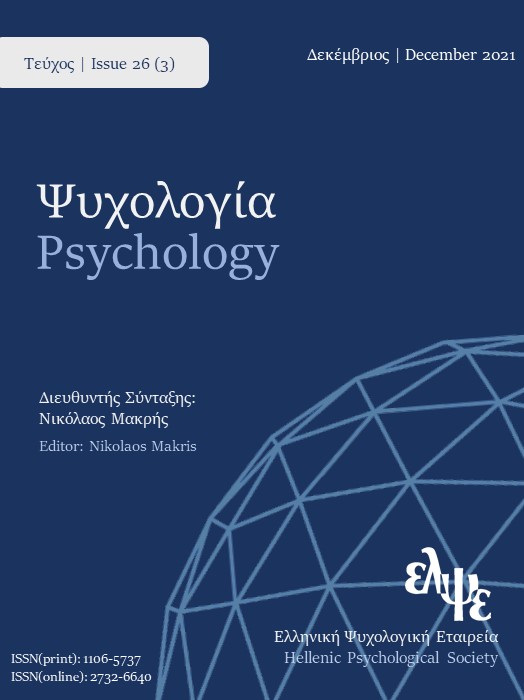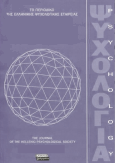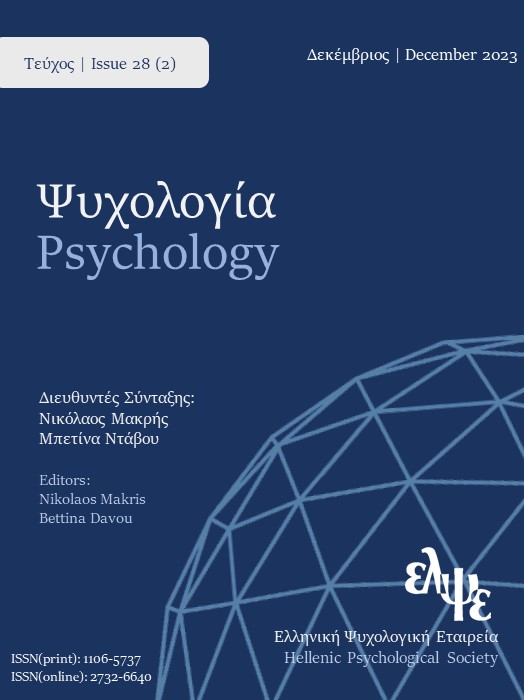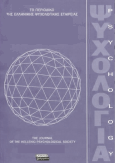Πρός μια ενσωμάτωση διαφορετικών προσεγγίσεων στην κοινωνική επιρροή: απο την λίστα σκέψεων στην αξιολόγηση πηγής-μηνύματος
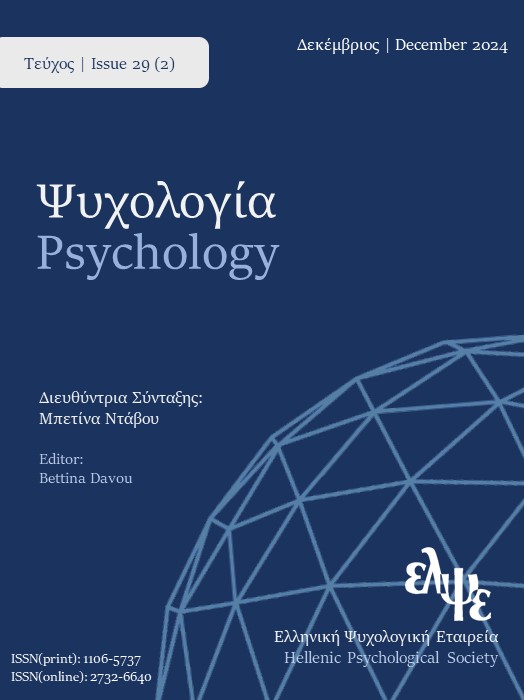
Περίληψη
Αυτό το άρθρο επιχειρεί να συνεισφέρει στη σύγκλιση δύο διαφορετικών προσεγγίσεων της κοινωνικής επιρροής, εκείνης που βασίζεται στην εργογραφία της πειθούς και εκείνης που βασίζεται στο γενετικό μοντέλο κοινωνικής επιρροής. Σκοπεύει επιπλέον να διαλευκάνει τις συνθήκες που επιδρούν στις περίπλοκες σχέσεις μεταξύ του καθεστώτος της πηγής (πλειονοτικής και μειονοτικής), του είδους ασκούμενης επιρροής (άμεσης και έμμεσης), του είδους επιχειρηματολόγίας (ισχυρούς και ασθενούς), και των ψυχολογικών διαδικασιών (γνωστικής διεργασίας και επεξεργασίας σύγκρισης και επικύρωσης). Και στα δύο πειράματα, εκτός από τον χειρισμό του καθεστώτος της πηγής και της ποιότητας της επιχειρηματολογίας, χρησιμοποιήθηκε μια Τρίτη ανεξάρτητη μεταβλητή, η εισαγωγή (ή όχι) του έργου μιας λίστας σκέψης (Πείραμα 1) και η εισαγωγή διαφορετικών ψυχολογικών προσεγγίσεων της γνωστικής διεργασίας (μέσω του έργου της λίστας σκέψεων) ή της επεξεργασίας σύγκρισης και επικύρωσης (μέσω της αξιολόγησης πηγής-μηνύματος) (Πείραμα 2). Οι αναλύσεις έδειξαν ότι στο Πείραμα 1 οι συνθήκες απουσίας λίστας σκέψεων οδηγούσαν σε μεγαλύτερη άμεση επιρροή, ενώ οι συνθήκες λίστας σκέψεων οδηγούσαν σε μεγαλύτερη έμμεση επιρροή. Επίσης, η μειονοτική επιρροή ήταν μεγαλύτερη από την επιρροή της πλειοψηφίας. Στο Πείραμα 2, μόνο στις συνθήκες λίστας σκέψεων -όπως και στο Πείραμα 1- τα ισχυρά επιχειρήματα οδηγούσαν σε μεγαλύτερη άμεση επιρροή από ότι τα ασθενή. Ως προς την έμμεση επιρροή, σημαντικά αποτελέσματα εμφανίστηκαν μόνο για τη μειονότητα: τα ασθενή επιχειρήματα ασκούσαν μεγαλύτερη επιρροή στη συνθήκη της λίστας σκέψεων από ό,τι στη συνθήκη αξιολόγησης πηγής-μηνύματος, ενώ τα ισχυρά επιχειρήματα στη συνθήκη αξιολόγησης πηγής-μηνύματος. Η συζήτηση αυτών των ευρημάτων αποσκοπεί να συνδυάσει δύο τόσο διαφορετικές μεταξύ τους προσεγγίσεις της κοινωνικής επιρροής.
Λεπτομέρειες άρθρου
- Πώς να δημιουργήσετε Αναφορές
-
Παπαστάμου Σ., Προδρομίτης Γ., & Γαρδικιώτης Α. (2024). Πρός μια ενσωμάτωση διαφορετικών προσεγγίσεων στην κοινωνική επιρροή: απο την λίστα σκέψεων στην αξιολόγηση πηγής-μηνύματος. Ψυχολογία: το περιοδικό της Ελληνικής Ψυχολογικής Εταιρείας, 29(2), 144–157. https://doi.org/10.12681/psy_hps.34599
- Ενότητα
- ΕΜΠΕΙΡΙΚΕΣ ΕΡΓΑΣΙΕΣ

Αυτή η εργασία είναι αδειοδοτημένη υπό το Creative Commons Attribution-ShareAlike 4.0 International License.
Το περιοδικό ΨΥΧΟΛΟΓΙΑ έχει υιοθετήσει μία πολιτική Platinum open-access. Τα έξοδα υποβολής, επεξεργασίας ή δημοσίευσης των εργασιών καλύπτονται από την Ελληνική Ψυχολογική Εταιρεία. Τα πνευματικά δικαιώματα των δημοσιευμένων εργασιών προστατεύονται από την άδεια 'Creative Commons Attribution-ShareAlike 4.0 International'. Οι Συγγραφείς διατηρούν τα Πνευματικά Δικαιώματα και χορηγούν στο περιοδικό το δικαίωμα της πρώτης δημοσίευσης. Η άδεια αυτή επιτρέπει σε τρίτους, να χρησιμοποιούν την εργασία σε οποιαδήποτε μορφή, με την προϋπόθεση της διατήρησης των διατυπώσεων που προβλέπονται στην άδεια σχετικά με την αναφορά στον αρχικό δημιουργό και την αρχική δημοσίευση στο περιοδικό ΨΥΧΟΛΟΓΙΑ. Επιπλέον, κάθε διανομή της εργασίας οφείλει να γίνεται με τους ίδιους όρους διανομής, δηλαδή με την ίδια άδεια Creative Commons.




